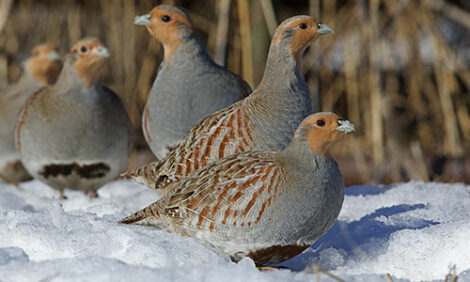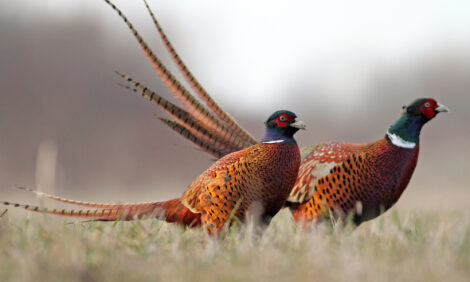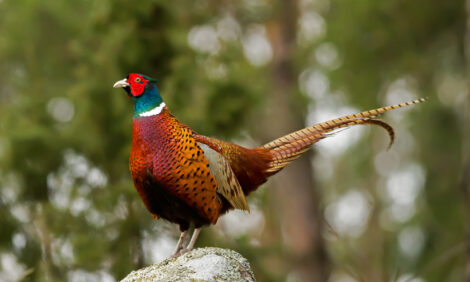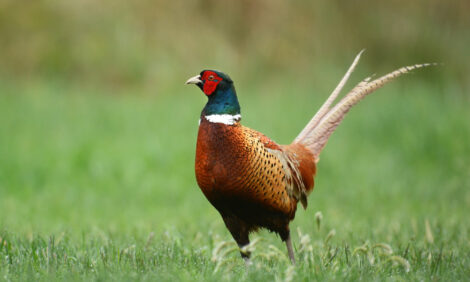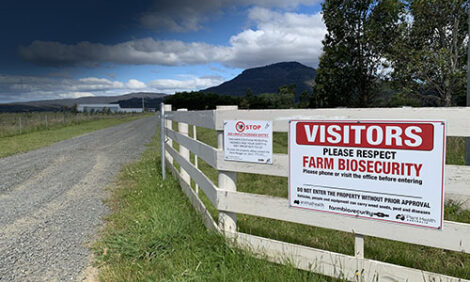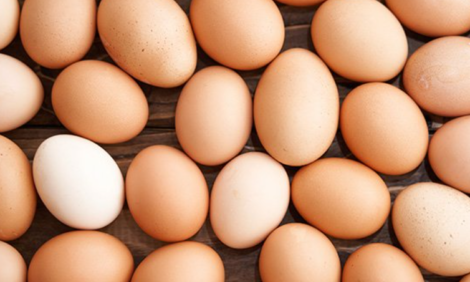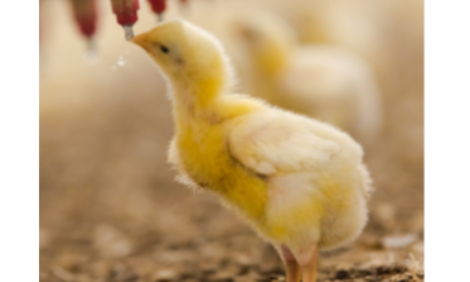



US Poultry Industry Manual - Bobwhite Quail production
Learn more about breeding and raising quailPart of Series:
< Previous Article in Series Next Article in Series >
Editor's Note: The following content is an excerpt from Poultry Industry Manual: The Foreign Animal Disease Preparedness and Response Plan (FAD PReP)/National Animal Health Emergency Management System (NAHEMS) Guidelines which is designed to provide a framework for dealing with an animal health emergency in the United States. Additional content from the manual will be provided as an article series.
Bobwhite Quail are indigenous to the United States. However, as farming practices have changed, loss of habitat has resulted in a significant decline in bird numbers. The decline in wild Bobwhite Quail populations has increased the demand for commercially raised birds for stocking private and public hunting preserves as well as for meat production. Bobwhite Quail production occurs throughout the United States but is greatest in southern states.
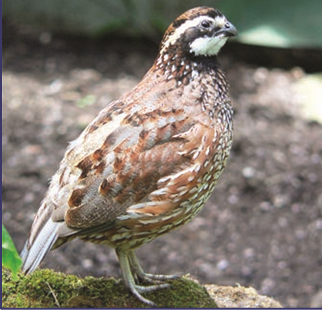
Several species and subspecies of Bobwhite Quail exist. The most common wild bird, and most frequently produced domesticated quail, is the Eastern Bobwhite.
Managing breeding quail
Quail breeder candidates are often raised in dimly lit and environmentally
controlled buildings to prevent stress, reduce cannibalism, and encourage uniform sexual maturation. Birds are grown on 10-11 hours of light. At 19 weeks of age, light intensity is increased by 1 hour per week until 25-27 weeks of age and/or 17 hours of light per day is attained. This day length is maintained throughout the breeding cycle. Breeders achieve consistent egg production at ~ 22 weeks of age.
Housing for breeders can vary, with some producers maintaining quail in floor pens while others keep them off the ground on slatted floors. Quail breeders can be kept in large colony housing, in smaller cages housing up to 20 birds, or in small cages as pairs (maximum 1 cock bird per 3 hens).
Raising birds on wire results in cleaner eggs and fewer problems with diseases, such as ulcerative enteritis, but cages must be maintained in a state of good repair. Breeder hens are beak trimmed and males may be beak trimmed (but to a lesser degree). In all systems, lower light intensity (0.5 ft candle) is desirable to calm the birds and reduce cannibalism.
Depending on the management system used (natural light only, 17 hour
artificial light, or year round production with preseason lighting), numbers of eggs produced per hen may vary from 50-200+ eggs a year. At the end of the breeding season, spent quail are allowed to recondition and are sold to preserves.
Hatching quail eggs
Eggs should be gathered at least 3-5 times daily. Collected eggs should be held in cold storage at 50-65° to stop embryonic development (which occurs above 68°). Eggs are slowly pre-warmed before being placed in incubators to prevent condensation of moisture on external surfaces of egg shells.
Bobwhite Quail eggs are incubated for 23-24 days at 99.5°F and 84-86% relative humidity. During the last three days of incubation, the temperature is lowered to 99°F or kept the same and relative humidity rises to as high as 90% during hatching.
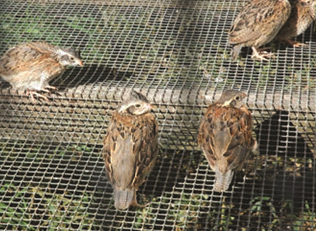
Brooding quail
Quail are increasingly being raised in converted broiler houses for 17 weeks under very low light conditions on wood shavings with nipple drinkers. This management program reportedly has resulted in improved livability, less feed consumption, and fewer disease issues.
Beak trimming is often practiced, especially where lights cannot be adequately dimmed. Trimming can be done at the hatchery or at 2-3 weeks of age. Also, beak trimming may be done prior to moving quail to outside flight pens. It is important to allow beaks to re-grow prior to shipping quail to a hunting preserve.
Brooder temperatures should be 98-100°F during the first week, and then lowered 5°F each week until ambient temperatures are reached.
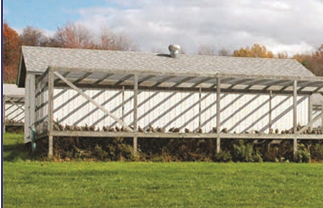
Moving to outdoor flight pens
Bobwhite Quail can be raised in traditional brooders and then moved to flight pens at ~ 6 weeks of age. During their time in flight pens, it is important to not crowd the birds and to watch for evidence of cannibalism. Approximately 2 square feet per bird is recommended for flight pens.
Shelter and hiding places provided by dense vegetation in flight pens is helpful in allowing quail to escape from aggressive pen mates. Bobwhite Quail are sold to private or public hunting preserves, dog trainers, or plantations.
Reference: "USDA APHIS | FAD Prep Industry Manuals". Aphis.Usda.Gov. 2013. https://www.aphis.usda.gov/aph...
The manual was produced by the Center for Food Security and Public Health, Iowa State University of Science and Technology, College of Veterinary Medicine, in collaboration with the USDA Animal and Plant Health Inspection Service through a cooperative agreement.
| References | ||||
|---|---|---|---|---|









